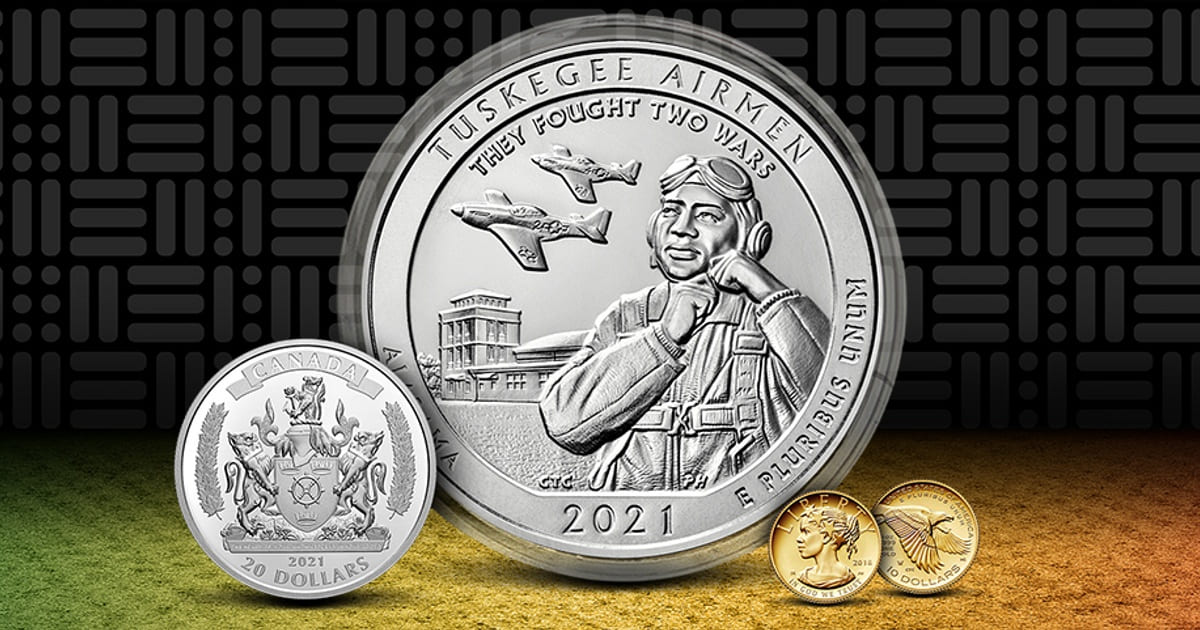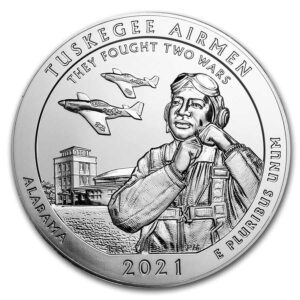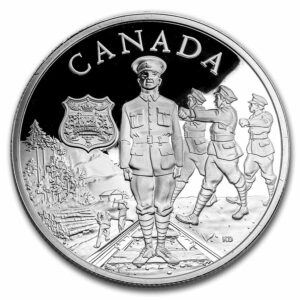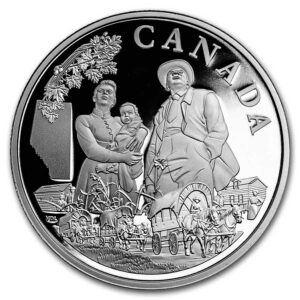
Black History Month is recognized annually to observe the histories, stories, and voices of Black people. February shines a spotlight on contributions to our history made by Black artists, educators, leaders, and more. From the U.S. Mint to the Royal Canadian Mint, trailblazers in the Black community can be found on many collectible coins and medals. From the Tuskegee Airmen Quarters to the modern Lady Liberty Gold coins and the Black Loyalist Silver coin, numismatics provide a tangible way to honor Black history.
Tuskegee Airmen National Historic Site Quarter

The final coin in the U.S. Mint’s America the Beautiful Program features the Tuskegee Airmen National Historic Site. This 5 oz silver coin honors the Alabama location that memorializes the work and accomplishments of roughly 1,000 pilots and more than 15,000 support staff who fought for racial equality in the U.S. and abroad. It is made of .999 fine silver and is released by the U.S. Mint.
The Tuskegee Airmen National Historic Site was initially constructed in 1941 in Tuskegee, Alabama, as the Moton Field flight training base for the pioneering pilots known as the Tuskegee Airmen. The field was named after the Tuskegee Institute principal Robert Russa Moton, who died the previous year. Before 1940, African Americans were banned from flying for the U.S. military. However, Civil Rights organizations exerted pressure which eventually resulted in forming an all African American pursuit squadron that became known as the Tuskegee Airmen.
Moton Field was the only primary flight facility for African American pilot candidates in the U.S. Army Air Corps during World War II. Built between 1940 and 1942 with funding from the Julius Rosenwald Fund, the Tuskegee Institute’s Moton Field was assigned officers from the Army Air Corps to oversee training. Though Moton field was closed in 1946 and a portion deeded to the city of Tuskegee as the municipal airport in 1972, the National Historic Site was established on November 6, 1998. Since October 10, 2008, visitors have been able to tour a restored Hanger One.
Modern Liberty Coins

2017 marked the 225th Anniversary of the U.S. Mint. To mark this momentous occasion, they introduced the 2017 American Liberty 225th Anniversary gold coin featuring a modern rendition of Lady Liberty. The American Liberty 225th Anniversary gold coin was struck in .9999 fine gold and was the first high-relief coin with a Proof finish ever minted by the United States. These coins were minted at West Point and depicted a profile of Liberty wearing a crown of stars.
In 2018, a 1/10 gold coin was created to complement the 1 oz gold coin issued in 2017 to commemorate the United States Mint’s 225th Anniversary. Struck in .9999 fine gold, it features the same modern design featured on the 2017 coin. These coins were minted at West Point and have a denomination of $10.
The U.S. Mint said the newest personification of Lady Liberty was “a modern rendition of this iconic figure that embodies the ideals of freedom and equality first set forth in our Declaration of Independence.”
2023 Canada Silver $20 Black History: No. 2 Construction Battalion

A 2023 release from the Royal Canadian Mint commemorates the largest all-Black battalion-sized unit in Canadian military history. From its establishment in 1916 to its dissolution in 1920, the No. 2 Construction Battalion overcame significant racial discrimination to play a crucial role in Canada’s war effort. They supported the Canadian Forestry Corps (CFC) in lumber operations across France, providing essential services during the First World War. This 99.99% pure silver coin pays tribute to the courageous men of No. 2 Construction Battalion, shedding light on their often-overlooked contributions. In the face of prejudice, their unwavering commitment to serve endures as a powerful legacy a century later.
2024 Canada Silver $20 Black History: Amber Valley

Another release from the Royal Canadian Mint, the 2024 Canada Silver $20 Black History: Amber Valley coin celebrates the rich history of Amber Valley, one of western Canada’s largest all-Black settlements in the early 20th century. At the heart of the design is a family portrait symbolizing the spiritual core of the story: the Black homesteaders who established Amber Valley (formerly Pine Creek) in 1909 and created a flourishing community. Surrounding elements include decorative motifs inspired by advertisements promoting western settlement, while the outline of Alberta’s map offers geographical context. Below the settlers, buildings are arranged to artistically represent Amber Valley, and along the bottom, a wagon train traversing northern Alberta’s rugged terrain reflects the settlers’ resilience, pioneering spirit, and their arduous journey northward.




